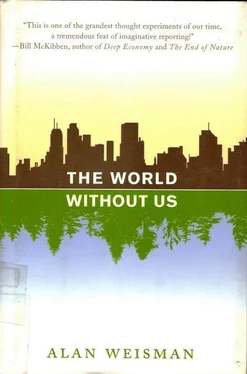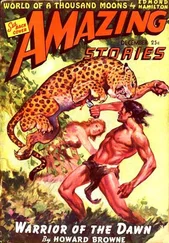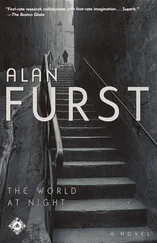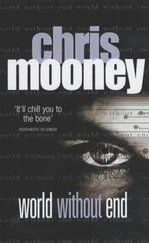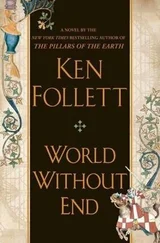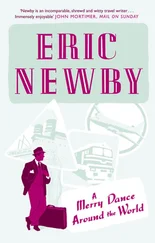Later, as European diseases raced across the continent and nearly extirpated the Indians, the buffalo population surged and spread. They had almost reached Florida when white settlers heading west met them. After nearly all the buffalo were gone, save a few kept as curiosities, the white settlers took advantage of the plains that the Indians’ ancestors had opened, and filled them with cattle.
_____
From his hilltop laboratory, Paul Martin looks over a desert city that grew along a river, the Santa Cruz, which flowed north from Mexico. Camels, tapirs, native horses, and Columbian mammoths once foraged on its green floodplain. When descendants of the humans who eliminated them settled here, they built huts from mud and branches of riverbank cottonwood and willow—materials that quickly returned to the soil and the river when no longer needed.
With less game, the people learned to cultivate the plants they gathered, and they called the village that evolved Chuk Shon, a name that meant “flowing water.” They mixed harvest chaff with river mud to form bricks, and this practice continued until mud adobes were supplanted by concrete after World War II. Not long after that, the advent of air-conditioning attracted so many people here that the river was sucked dry. They dug wells. When those dried, they dug deeper.
The Santa Cruz River’s desiccated bed is now flanked by Tucson’s civic center, which includes a convention hall whose jumbo concrete-and-steel-beam foundation seems like it should last at least as long as Rome’s Coliseum. The tourists of some distant tomorrow might have a hard time finding it, however, because after today’s thirsty humans are gone from Tucson and from the bloated Mexican border city of Nogales, Sonora, 60 miles south, eventually the Santa Cruz River will rise again. Weather will do what weather does, and from time to time Tucson and Nogales’s dry river will be back in the business of building an alluvial plain. Silt will pour into the basement of the by-then-roofless Tucson Convention Center until it’s buried.
What animals would live atop it is uncertain. Bison are long gone; in a world without people, the cows that replaced them won’t last long without their attendant cowboys to discourage coyotes and mountain lions. The Sonoran pronghorn—a subspecies of that small, speedy Pleistocene relic, the last American antelope—verges on extinction in desert preserves not far from here. Whether there are enough left to replenish the breed before the coyotes finish them off is questionable, but possible.
Paul Martin descends Tumamoc Hill and drives his pickup truck west through a cactus-studded pass into the desert basin below. Before him lie mountains that are sanctuary to some of the last of North America’s wildest creatures, including jaguar, bighorn sheep, and collared peccaries, locally known as javelinas. Many living specimens are on display just ahead at a famous tourist attraction, the Arizona—Sonora Desert Museum, which includes a zoo with subtle, naturally landscaped enclosures.
Martin’s destination, a few miles shy of there, isn’t subtle at all. The International Wildlife Museum was designed to replicate a French Foreign Legion fort in Africa. It houses the collection of a late millionaire big-game hunter, C. J. McElroy, who still holds many world records, including the world’s biggest mountain sheep—a Mongolian argali—and the biggest jaguar, bagged in Sinaloa, Mexico. The special attractions here include a white rhino, one of 600 animals shot by Teddy Roosevelt during a 1909 African safari.
The museum’s centerpiece is the faithfully reproduced 2,500-square-foot trophy room of McElroy’s Tucson mansion, which bears the taxidermized spoils of a lifelong obsession with killing large mammals. Locally often derided as the “dead animal museum,” for Martin on this night, it’s perfect.
The occasion is the launch of his 2005 book, Twilight of the Mammoths. Just behind his audience rises a phalanx of grizzly and polar bears, frozen forever in mid-attack. Above the podium, its ears extended like gray spinnakers, is the trophy head of an adult African elephant. To either side, every breed of spiral horns found on five continents is represented. Pulling himself from his wheelchair, Martin slowly scans the hundreds of stuffed heads: bongo, nyala, bushbuck, sitatunga, greater and lesser kudu, eland, ibex, Barbary sheep, chamois, impala, gazelle, dik-dik, musk ox, cape buffalo, sable, roan, oryx, waterbuck, and gnu. Hundreds of pairs of glass eyes fail to return his moist blue gaze.
“I can’t imagine a more appropriate setting,” he says, “to describe what amounts to genocide. In my lifetime, millions of people slaughtered in death camps, from Europe’s Holocaust to Darfur, are proof of what our species is capable of. My 50-year career has been absorbed by the extraordinary loss of huge animals whose heads don’t appear on these walls. They were all exterminated, simply because it could be done. The person who put this collection together could have walked straight out of the Pleistocene.”
He and his book conclude with a plea that his accounting of the Pleistocene mega-massacre be a cautionary lesson that stops us from perpetrating another that would be far more devastating. The matter is more complicated than a killer instinct that never relents until another species is gone. It involves acquisitive instincts that also can’t tell when to stop, until something we never intended to harm is fatally deprived of something it needs. We don’t actually have to shoot songbirds to remove them from the sky. Take away enough of their home or sustenance, and they fall dead on their own.
CHAPTER 6

The African Paradox
LUCKILY FOR THE world after humans, not all the big mammals are gone. A continent-sized museum, Africa, still holds a striking collection. Would they spread across the planet after we’re gone? Could they replace what we finished off elsewhere, or even evolve to resemble those same lost creatures?
But first: If people come from Africa originally, why are elephants, giraffes, rhinos, and hippos even there at all? Why weren’t they killed off, like 94 percent of Australia’s large animal genera, most of them giant marsupials, or all the species that American paleontologists mourn?
Olorgesailie, site of the paleolithic tool factory discovered by Louis and Mary Leakey in 1944, is a dry yellow basin 45 miles southwest of Nairobi in the Eastern African Rift Valley. Much of it is dusted in white chalk from diatomaceous sediments, the stuff of swimming pool filters and kitty litter, composed of tiny fossilized exoskeletons of freshwater plankton.
The Leakeys saw that a lake had filled the Olorgesailie depression many times in prehistory, appearing in wet cycles and disappearing during drought. Animals came here to water, as did the toolmakers who pursued them. Ongoing digs now confirm that from 992,000 to 493,000 years ago, the lake’s shore was inhabited by early humans. No actual hominid remains were found there until 2003, when archaeologists from the Smithsonian Institution and the National Museums of Kenya uncovered a single small skull, probably of Homo erectus, a predecessor of our own species.
What had been found, however, were thousands of stone hand-axes and cleavers. The most recent were designed for throwing: rounded on one end, with a point or double-faced edge on the other. Where protohumans at Olduvai Gorge, like Australopithecus, simply banged stones together until one chipped, these were flaked with techniques that could be duplicated, rock after rock. They are in every layer of human habitation here, meaning that people hunted and butchered game around Olorgesailie for at least half a million years.
Читать дальше
